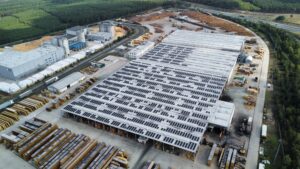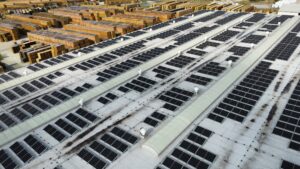Stelmet S.A. is a manufacturer of wooden products for fencing, equipping, and decorating gardens, plots, terraces, balconies, parks, markets, and all kinds of recreational spaces. It has a history of over 38 years. Since 1985, the company has been increasing its production, started exporting, and became a leading producer of wooden garden architecture in Poland and Europe.
For this 1 MWp project, JA Solar modules with double glass were used. These modules provide a lower temperature coefficient, reduced energy losses, and increased tolerance to mechanical loads. The ballast mounting structure from CORAB S.A. has a corrosion-resistant coating based on a new chemical composition, providing long-lasting surface protection. In total, 1850 modules were installed on the rooftop installations.


Collaborating with Stelmet is an excellent example of accelerating industrial decarbonization. Thanks to the construction of the installation by Quanta Energy, CO2 emissions will be reduced by over 852 tons annually, resulting in over 21,315 tons less CO2 emitted into the atmosphere over a quarter of a century.
Due to ongoing technological processes, planning and preparation for the electrification of the photovoltaic installation were carried out with utmost care. All materials were prepared and checked in advance. The plant had to be temporarily shut down during the PV installation connection, requiring close cooperation and excellent coordination. Such works are carried out not only in agreement with the client but also with the distribution network operator.
The photovoltaic installation is another eco-friendly technology applied in the production plant, which, along with chimney filters and a condensing system, minimizes its impact on the natural environment. It is worth mentioning that the plant generates green electrical energy for its own needs from part of the heat produced during pellet production, thus complementing its eco-friendly character.
